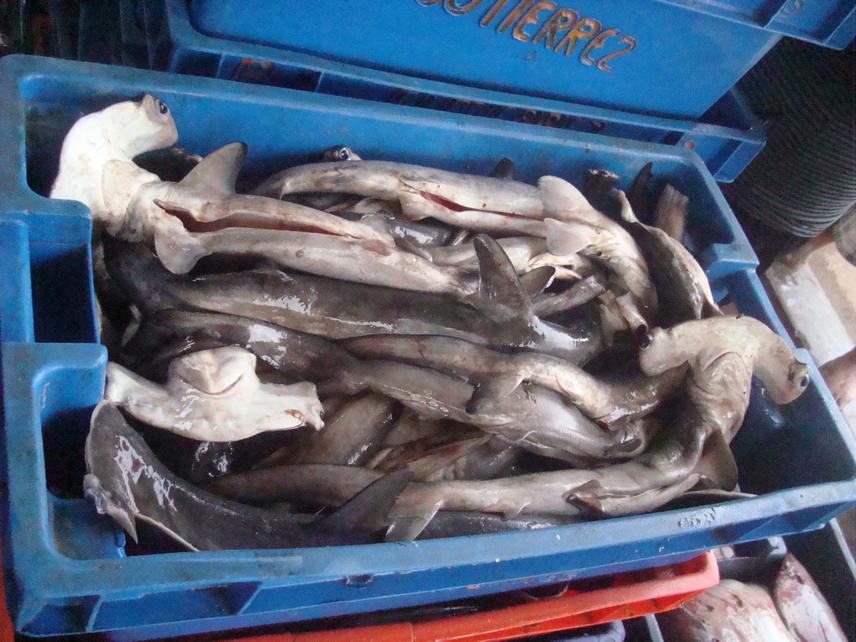Adriana Gonzalez Pestana
Other projects
21 Nov 2019
Research and Conservation of the Smooth Hammerhead Shark (Sphyrna zygaena) in their Nursery Area, Northern Peru
Identify and characterize the aggregation areas and its fishery of smooth hammerhead and mobulids in Peruvian waters; and increase awareness and education about elasmobranches.

Juveniles hammerheads.
Peru accounts the highest historical landing for sharks in the Pacific and for batoids in the southeast Pacific. In Peru, smooth hammerhead is the third shark specie most exploited; neonates and juveniles are fished; nursery areas might exist (González et al. in review); and their fins are highly valuable. It has a vulnerable status (IUCN) and CITES included it in appendix II (2013). In Peru, mobulids represent the second batoid group most captured. They are highly valuable mainly because of their gill rakers- causing unsustainable captures (Marshall et al., 2011; Couturier, 2012). CITES included Manta birostris in appendix II, and CMS included it in appendix I and II. Peru lacks biology and fishery information that hampers the development of a sustainable fishery.
This way, the aim of this project is to promote and support the conservation of smooth hammerhead shark (Sphyrna zygaena) and mobulids (Mobulidae)-both included in CITES. So, the objectives are: identify and characterize the aggregation areas in Peruvian waters of smooth hammerhead and mobulids; characterize the fishery in their aggregation areas; constitute a sample bank of smooth hammerhead and mobulids; increase awareness and education about elasmobranches in elasmobrach-fishery communities; and promote students in elasmobrach research. Thus, science information will be available to design and implement a sustainable management program for smooth hammerhead and mobulids in Peru. Moreover, detailed information is necessary for identifying priority conservation areas. In this way, the key components for the conservation of exploited species are: knowledge (e.g. biological information), their fishery management, and education and awareness of their situation.